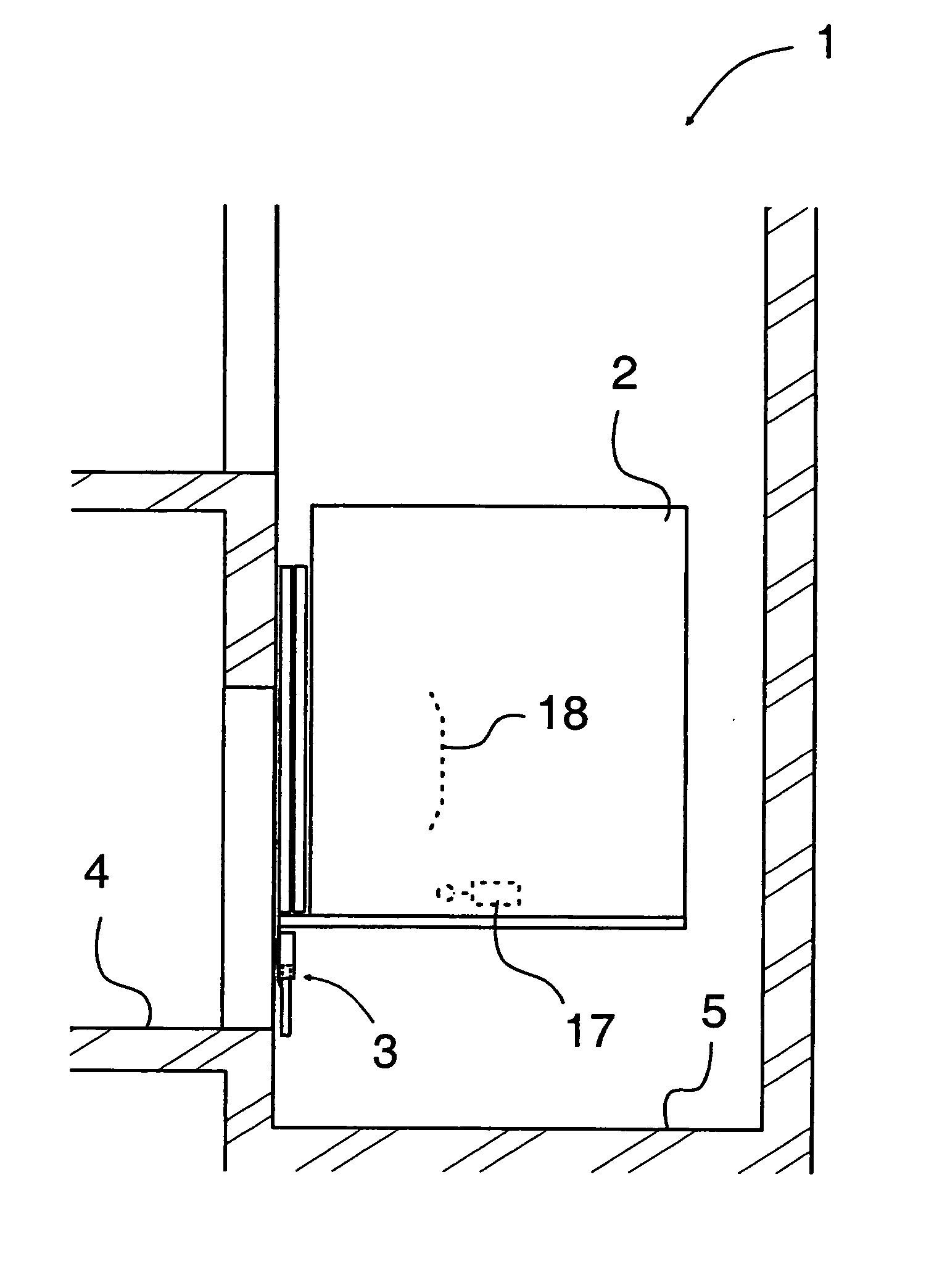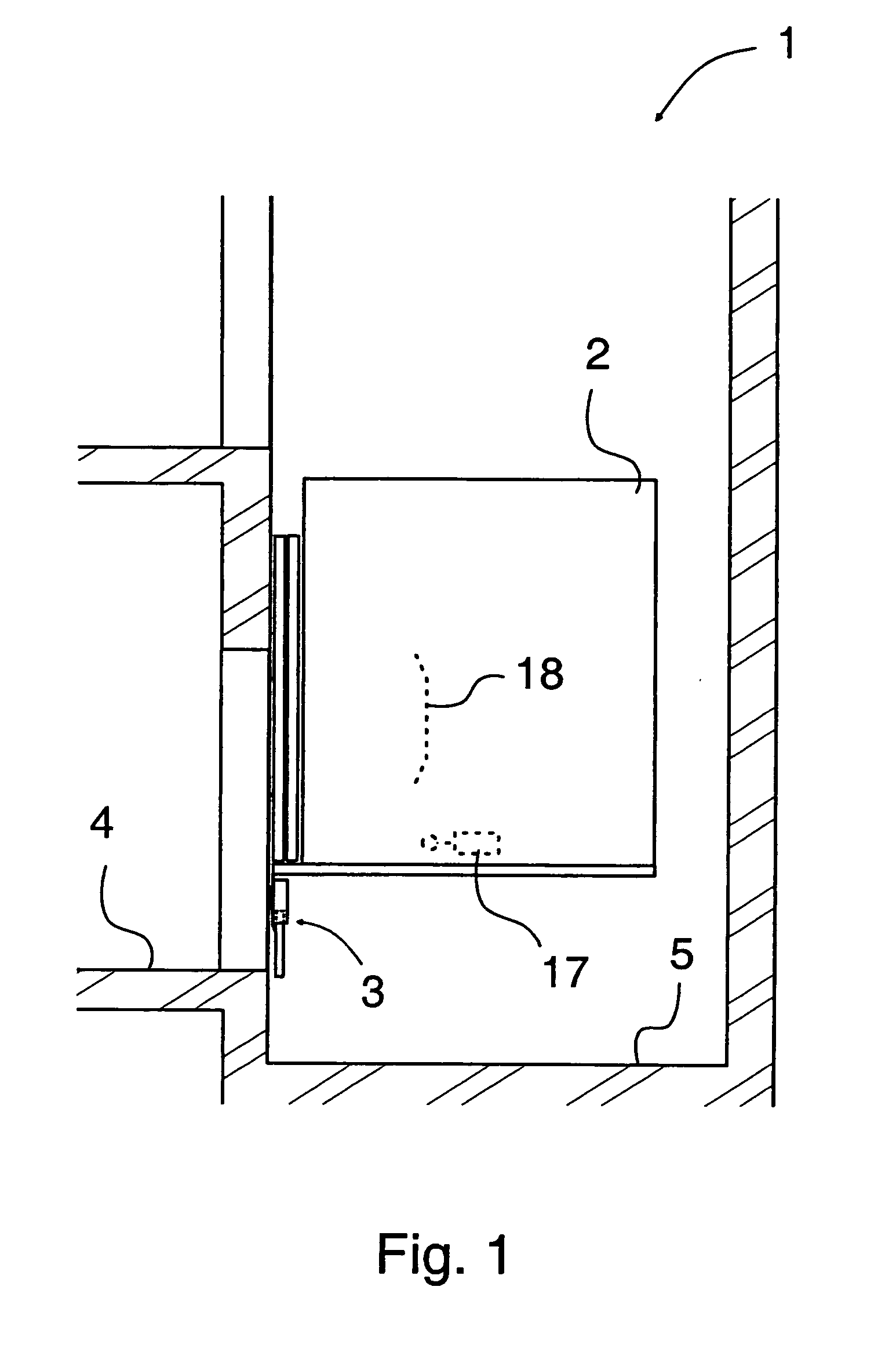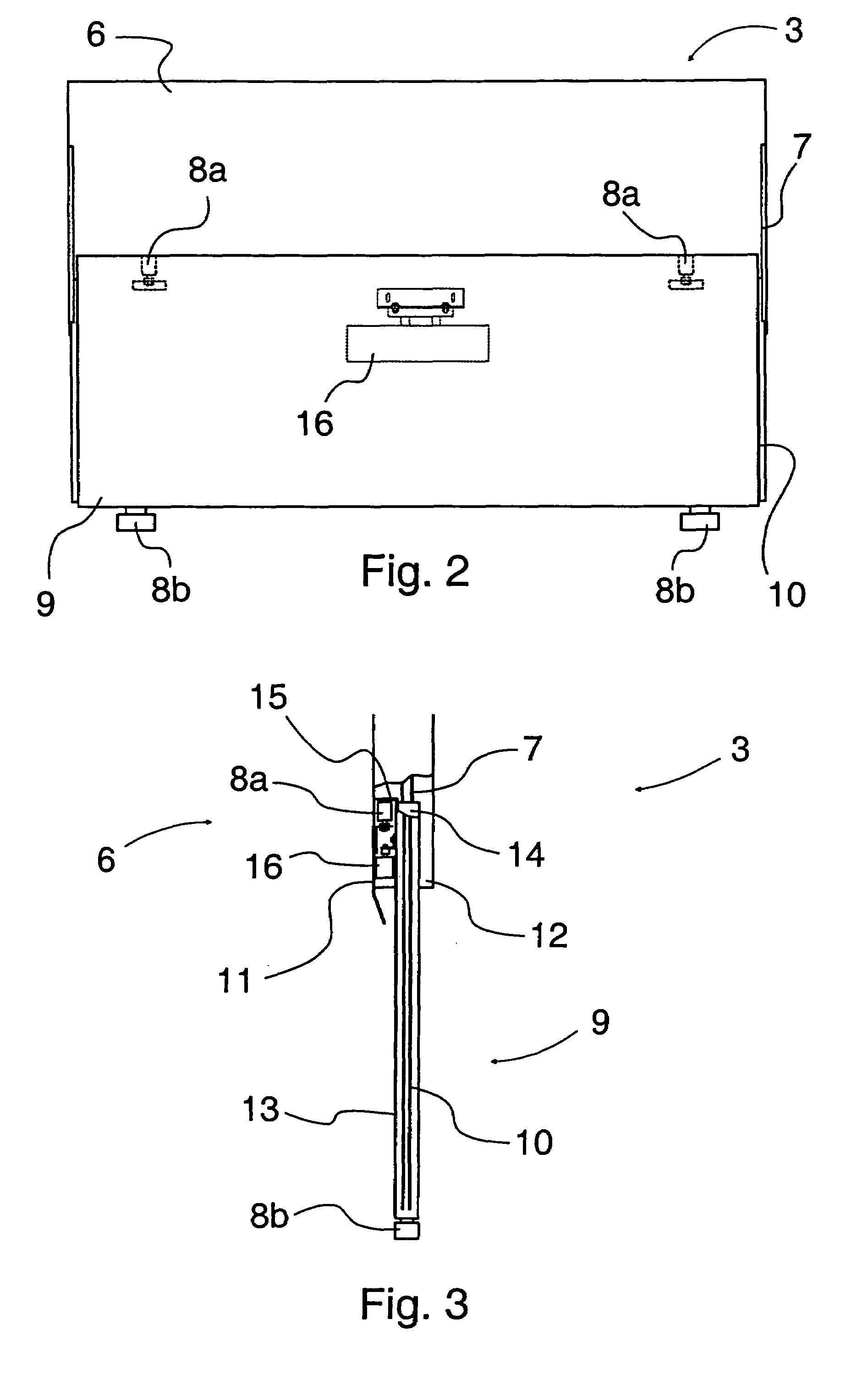Elevator arrangement
a technology for elevators and slats, which is applied in the direction of elevators, building lifts, hoisting equipment, etc., can solve the problems of insufficient room for the toe guard in the low elevator shaft pit, the risk of the person's toe being injured, and the person working on the landing and loading of the elevator, etc., to achieve the effect of reliable and economical safety devices and cost saving
- Summary
- Abstract
- Description
- Claims
- Application Information
AI Technical Summary
Benefits of technology
Problems solved by technology
Method used
Image
Examples
Embodiment Construction
[0037]FIG. 1 presents a diagrammatic and simplified view of an elevator car 2 having stopped in the elevator shaft 1 at a position somewhat above the lowest landing floor 4. In the doorway, the gap opening into the elevator shaft between the lower edge of the elevator car and the landing floor 4 is covered by telescoping toe guard 3 extending downwards from the front edge of the elevator car 2 and having a total height larger than the height of the pit 5 of the elevator shaft.
[0038]Thus, people getting out of the elevator car having stopped in an exceptional position can not fall accidentally into the elevator shaft. On the bottom floor, such a fall is not as dangerous as in a similar situation on upper floors. FIG. 1 also shows a safety circuit bypass switch 17, depicted with broken lines and, in this embodiment, fastened to the lower part of the elevator car 2. The switch is controlled by a ramp 18 mounted on a side wall of the shaft 1.
[0039]FIGS. 2 and 3 present a toe guard 3 acc...
PUM
 Login to View More
Login to View More Abstract
Description
Claims
Application Information
 Login to View More
Login to View More - R&D
- Intellectual Property
- Life Sciences
- Materials
- Tech Scout
- Unparalleled Data Quality
- Higher Quality Content
- 60% Fewer Hallucinations
Browse by: Latest US Patents, China's latest patents, Technical Efficacy Thesaurus, Application Domain, Technology Topic, Popular Technical Reports.
© 2025 PatSnap. All rights reserved.Legal|Privacy policy|Modern Slavery Act Transparency Statement|Sitemap|About US| Contact US: help@patsnap.com



